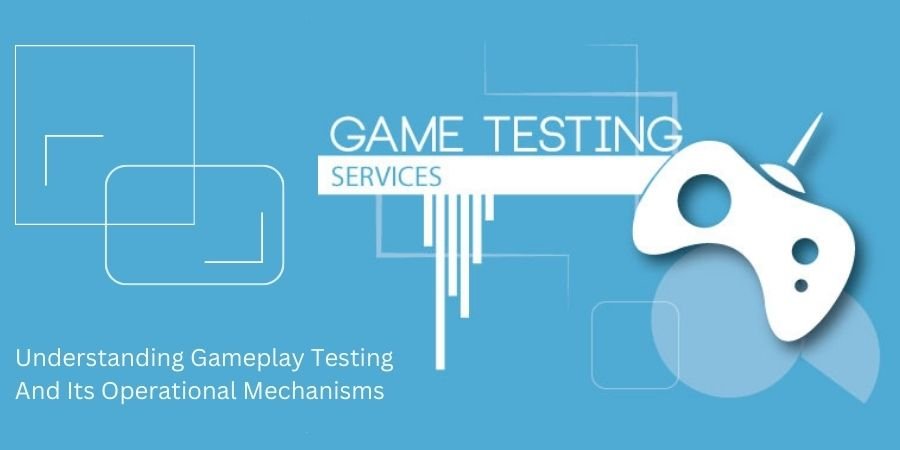Gameplay testing is a pivotal part of the video game development process. It helps detect bugs, balance issues, and other problems that can negatively impact the player experience.
This blog will explore what gameplay testing entails, why it’s pivotal, and how testing teams typically operate. By understanding these mechanisms, game developers can better plan their testing efforts to deliver high-quality games.
What Is Gameplay Testing?
Software testing company refers to the process of evaluating how well all the game’s interconnected systems and features work together from a player’s perspective. Testers play through levels, experiment with mechanics, and try to “break” the game in various ways. The goal is to find issues like crashes, glitches, imbalances, poor instructions, or anything else that prevents the intended gameplay from functioning smoothly. Gameplay testing occurs at distinct stages of development to catch problems early.
The Significance Of Gameplay Testing:
Bugs and other issues identified during gameplay testing can be fixed before launch, improving the overall player experience. It helps boost critical reception and sales potential. Gameplay testing also validates that the game is fun, engaging, and provides the intended entertainment value. It ensures what was designed on paper translates well into the virtual world. Without thorough testing, even small oversights can seriously undermine a game’s quality and replayability.
Typical Gameplay Testing Processes:
- Scripted Testing: Testers use written test cases, or “scripts,” to methodically work through intended gameplay scenarios, interactions, and edge cases. This verifies core functionality.
- Exploratory Testing: Testers freely experiment with the game without a set script. They try unexpected actions to surface hidden bugs. This finds overlooked or emergent issues.
- Regression Testing: When bugs are fixed, testers re-evaluate impacted areas to ensure repairs don’t introduce new problems elsewhere. This validates solutions.
- Sanity Testing: Short-focused test sessions catch any bugs introduced during daily development. It will prevent issues from piling up.
- Load Testing: Larger test teams stress-test the game by simulating high-player concurrency. This identifies performance bottlenecks.
- Accessibility Testing: Testers evaluate the game experience for players with disabilities to ensure compliance with standards.
- Localization Testing: Translated game text, audio, and cultural references are tested for each target language/region.
- Hardware Compatibility Testing: The game is tested on an array of PC and console hardware configurations.
- Network Testing: Networking functionality is rigorously evaluated for online/multiplayer games.
Typical Gameplay Testing Roles And Responsibilities:
Gameplay testing teams consist of testers with specialized roles:
- Lead Tester: Manages the overall testing effort, plans test cases, tracks issues, and reports status.
- Developer Tester: Works closely with developers throughout the project, regularly testing builds.
- QA Tester: Focuses on methodically testing features per written test case.
- Exploratory Tester: Approaches testing freely to surface unexpected issues through experimentation.
- Automation Tester: Develops automated test frameworks and scripts for regression testing.
- Network Tester: Specializes in evaluating online functionality like netcode, matchmaking, etc.
- Performance Tester: Stresses systems through load, stress, and optimization testing.
- Localization Tester: Evaluate game functionality, text, and audio for specific languages/regions.
- Accessibility Tester: Ensures the game is playable and enjoyable for users with disabilities.
- Junior Tester: Supports senior testers by running tests, reproducing issues, and more.
Gameplay Testing Best Practices:
- Start Early: Testing should begin as soon as playable builds are available to catch issues upfront.
- Iterative Approach: Testing occurs in short iterative cycles aligned with development sprints.
- Automate Regression: Automated test frameworks and suites speed up repetitive tests.
- Prioritize Bugs: Issues are prioritized based on severity/reproducibility to focus on fixing.
- Reproduce Consistently: Clear steps to reproduce bugs are documented for developers.
- Test Edge Cases: Test unusual actions, limits, rare states, and “breaking” the game.
- Stress & Load Test: Simulate high usage loads to catch performance bottlenecks.
- Use Defect Tracking: Centralized tracking of all issues ensures proper resolution.
- Collaborate Closely: The testing team works in sync with other departments.
- Continuously Improve: Testing processes are refined based on lessons learned.
Gameplay Testing Challenges:
While gameplay testing aims to be thorough, some challenges remain:
- Emergent Behavior: It’s difficult to anticipate all the ways players may interact in a complex game.
- Time Constraints: Testing every possibility is infeasible, so prioritization is key.
- Hardware Variability: Issues may only appear in specific device configurations.
- Moving Target: A game changes daily, so tests need constant re-evaluation.
- Subjectivity: Some aspects, like balance/fun, require subjective human evaluation.
- Resource Limitations: Larger teams and longer schedules aid testing but add costs.
- Bugs Reintroduced: Fixes can unintentionally cause regressions elsewhere.
- Pressure to Ship: There’s a balance between quality and meeting deadlines.
To overcome such challenges, experienced testers leverage automation, focus on critical scenarios, and work closely with developers. Outsourcing specialized testing to expert third-party software testing companies can also help.
Outsourcing Gameplay Testing:
For indie teams or studios with tight budgets/timelines, outsourcing specialized gameplay testing can boost quality assurance efforts:
- Third-party test labs provide on-demand access to dedicated QA teams, advanced methodologies, extensive hardware libraries, and reporting structures.
- Offshore testing partners leverage lower costs to provide larger testing teams that can scale up or down based on project needs.
- Experienced testers find issues that in-house staff may miss due to familiarity with the codebase. Outside perspectives catch different types of bugs.
- Outsourcing allows core developers to stay focused on programming tasks while testers handle assurance.
- Specialized testing services are available for areas like localization, accessibility, performance optimization, and platform/device compatibility that require expert resources.
- Managed testing services fully staffed test teams, provided management oversight, and took responsibility for issue tracking and reporting.
- Select partners maintain proprietary testing methodologies, custom tools, and deep expertise that boost efficiency.
- Of course, outsourcing requires careful vendor selection and oversight to ensure strategic alignment. But it can be a cost-effective force multiplier for games with limited testing budgets or headcounts.
Conclusion:
Thorough gameplay testing is essential for delivering high-quality, bug-free games. It validates that the core design is fun and the systems work as intended on a technical level.
While testing poses challenges, established processes, roles, best practices, and tools help maximize effectiveness. With dedicated testing efforts, developers can be confident their games will provide smooth, engaging experiences upon release.

